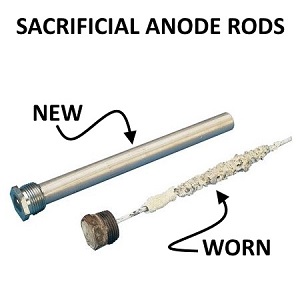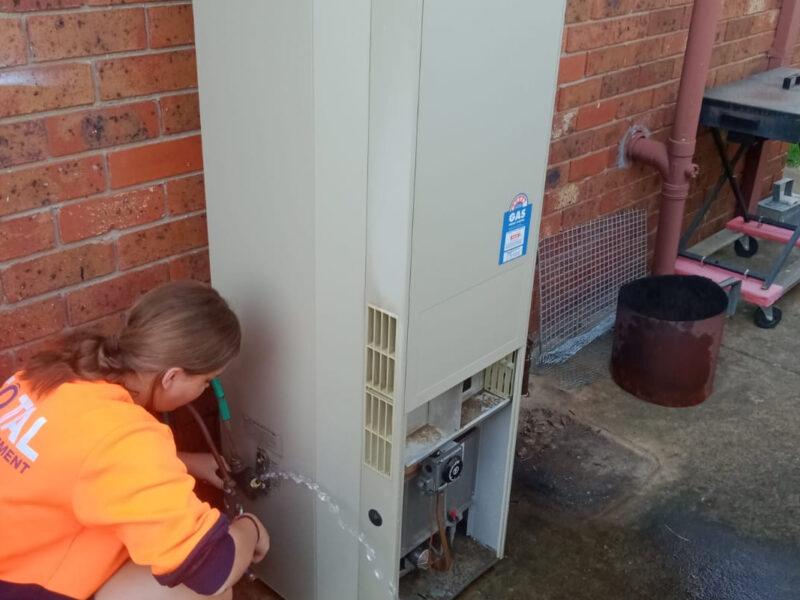 What is a Sacrificial Anode?
What is a Sacrificial Anode?
A sacrificial anode, or hot water anode, plays an essential part in keeping the storage cylinder in your hot water system free from corrosion, thus extending the life of your hot water service. The anode rod is made from either aluminium, magnesium or zinc and penetrates into the tank’s interior to protect the metal lining of your tank from corrosion. It does this by oxidizing more quickly than the metal it is protecting and is completely consumed before the other metal (your tank) reacts to the electrolytes and starts to corrode.
In laymen terms, the anode will corrode and breakdown instead of your hot water tank, which extends life expectancy of your hot water system.
How do I know if I need to change my Hot Water Anode?
Cloudiness in your hot water can indicate excessive sediment built up in your hot water system. Rusty coloured water or an egg like odour is also a sign the sacrificial anode rod has completely broken down and a replacement is required.
The best option is to routinely replace your sacrificial anode, we recommend every 4-5 years. This will depend on:
- The manufacturer instructions
- Quality of your water
- How much water travels through your water heater
Note: If you have soft water, the anode rod will deteriorate at a much faster rate.
How do I change a Hot Water Anode?
- The first step is to turn any power off to your hot water tank and the cold water supply. You can do this by turning off the power isolation switch and the cold water feed tap or you can turn off the main cold water supply to the house, usually located at the water meter.
- Once the power and water are isolated, pull the pressure temperature relief valve to remove any pressure from the system and then drain down the tank by removing approx. 10 litres of hot water. You can do this via the tank drain valve and remember the water will be above 60 degrees Celsius, so make sure you have a garden hose set up on the drain line, a bucket to remove the hot water, gloves on and safety glasses to prevent scalding.
- Once drained, turn the drain valve off again and locate the Anode, which is usually found on the top of the unit - you may need to remove the top panel to locate the hex head of the anode.
- Once found, loosen the hex head with a large shifting spanner or socket set. You may find the anode nut hard to budge, so a little extra force may be required to get it started. Then keep unscrewing until the rod can be completely removed from the tank.
- Apply some plumber’s Teflon Tape to the thread of the new anode, then install it into position, firstly by hand and then tighten it with a shifting spanner until a good seal is achieved - but don’t over-tighten.
- Now it’s time to turn the cold water supply and power back on. Once both are on, flush any air out of the system by turning on a hot tap in the home until the gurgling sound stops.
- Then you are ready to check for leaks. Check around the new anode connection, the drain valve where you drained the hot water system from and the pressure temperature relief valve you flushed at the start of the job.
No Leaks? Well now you are set for the next 4-5 years.
Need help from Melbourne’s Best Hot Water Plumbers?
For all your hot water system repairs and anode replacement needs contact Essendon Plumbing Services on 1300 231 976 or book online. We’re here to help 24/7, 365 days a year.


 What to Do if My Tap Water is Brown
What to Do if My Tap Water is Brown

